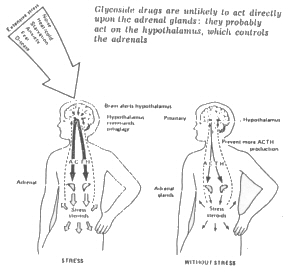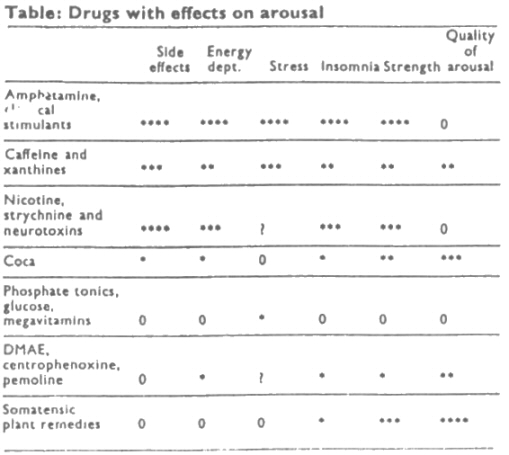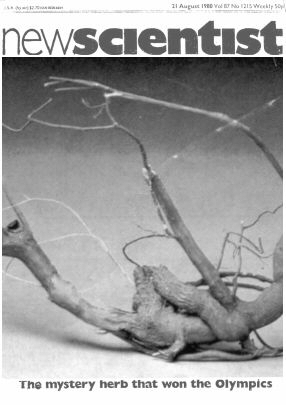
I conclude from this that the primary site of action is the steroid control systems of the hypothalamus and pituitary, which would then produce a cascade of subsidiary effects on body systems. These effects on blood pressure, metabolism, liver synthesis, haematopoieses etc have already been detected in numerous laboratory studies on ginseng, but their variety have so far only confused researchers and encouraged skeptics. The model will also explain the effects of these substances on performance, that is, their use as athlete's friends. For it has recently been discovered that motivation, alertness and sensitivity are produced by the stress hormones acting directly within the brain as psycho hormones. Psychiatrists have long been aware of the vitalizing effects of some steroids and ACTH. Like ginseng, they can make debilitated, depressed and chronically ill people feel on top of the world, but their effects are temporary and they are toxic. Medicine would love to have a compound which had that vitalizing effect but which was safe and long lasting. Perhaps it has existed for 5000 years, discovered by the ancient Chinese?


0 is minimum ; **** is maximum
If we place the action of these substances within body control systems, we are actually coming to the same conclusion about them as the ancient Chinese. In the Chinese tradition these substances were never regarded as curative, but rather as adjustive; that is, able to “tune” organ systems of the body in line with environmental influences. This made them all the more valuable in Chinese eyes because their system of medicine was based on prevention rather than cure. By the same token Western pharmacology with its “one drug - one disease” paradigm, has found these remedies difficult to understand, difficult to accept and even more difficult to test. Yet we have seen that where the appropriate tests are applied, these remedies can be proved to work in the laboratory, and to be neither panaceas nor panegyrics.
